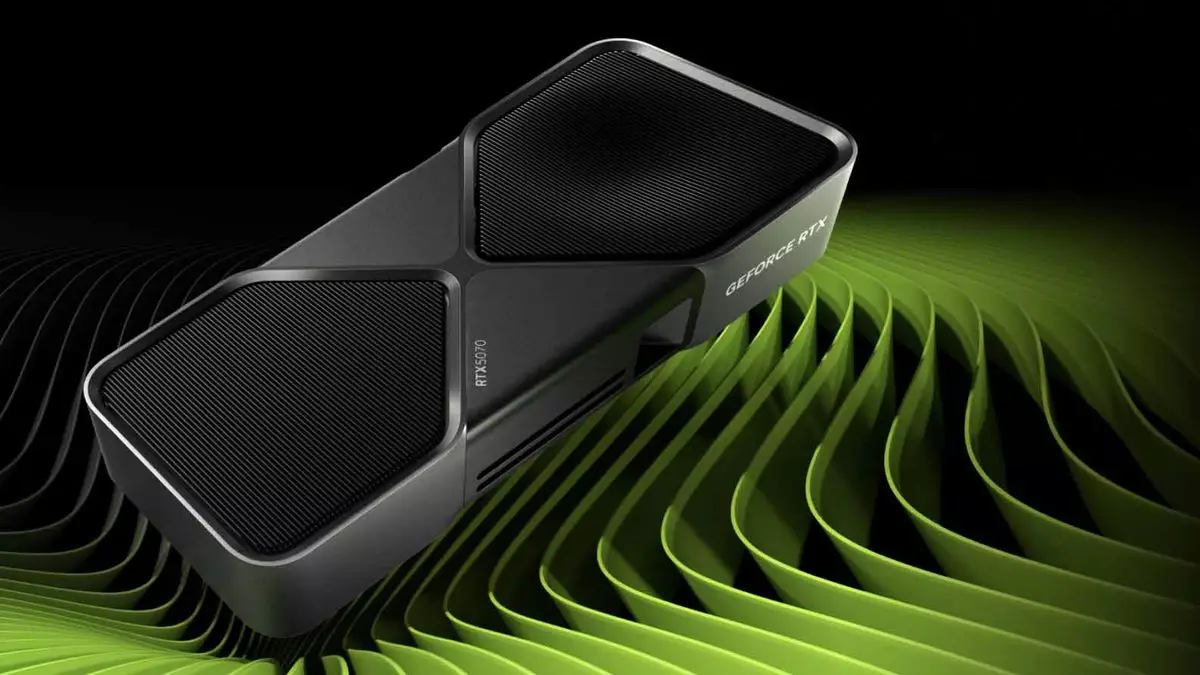At the recently concluded CES 2025, Nvidia unveiled its highly anticipated GeForce RTX 5070—a graphics card that, despite being considered the least potent among the newly announced 50-series lineup, has generated significant buzz across the tech community. With a launch scheduled for February, many are wondering if the hype surrounding this GPU is justified. Following the event, tech journalists and enthusiasts alike have been keen to explore the implications of Nvidia CEO Jen-Hsun Huang’s bold assertion that the RTX 5070 offers performance comparable to the RTX 4090, previously acknowledged as Nvidia’s top-tier offering.
Although the potential for the RTX 5070 to rival its predecessor’s performance is thrilling, it is essential to dissect the validity of these claims carefully. Tech outlet PCGamesN has published preliminary performance reviews, showcasing Ray-Tracing capabilities in games like “Marvel Rivals.” Ben Hardwidge from PCGamesN observed that under specific conditions, the RTX 5070 seemingly outran the RTX 4090. This performance advantage raises eyebrows, especially when considering that the RTX 5070 comes with a price tag of $549, significantly lower than the RTX 4090’s previous pricing structure.
However, the mechanics behind these impressive results warrant scrutiny. The RTX 5070 employs advanced Tensor cores alongside Nvidia’s newly announced DLSS 4 Multi Frame Generation. This technology allows the GPU to generate up to three intermediary frames for every frame rendered, enhancing visual fluidity at high resolutions. While impressive, this reliance on AI-driven technology means that the RTX 5070’s performance can vary dramatically depending on the optimization of the titles being played.
DLSS 4, designed to exploit AI capabilities, must be central to any evaluation of the RTX 5070’s performance. In scenarios like those presented at CES 2025—where “Marvel Rivals” settings were finely tuned for the RTX 5070—the GPU demonstrated a significant output advantage, achieving frame rates as high as 240 fps against the RTX 4090’s 180 fps. This disparity is partially attributable to DLSS 4’s sophisticated frame generation, which plays a crucial role in delivering these elevated performances.
However, one should be cautious when interpreting these results. The effectiveness of DLSS 4 varies based on the specific titles, the build quality of the test machines, and the precise CPUs employed. Without comprehensive insights into the components used during comparisons, drawing universally applicable conclusions does become difficult. Furthermore, given that the RTX 4090 lacks support for DLSS 4, the test setup’s integrity comes into question; one must contemplate whether this is a fair assessment of the two GPUs in typical usage scenarios.
Interestingly, Nvidia itself seems aware of the limitations surrounding these evaluations. During their discussions post-announcement, the company hinted that “Marvel Rivals” is particularly optimized for the RTX 5070, implying that performance benchmarks may not hold up universally across other gaming titles. Evidence suggests that while the RTX 5070 might hold substantial promise in certain conditions, real-world performance across varied games may yield a less decisive advantage.
Most likely, as gamers await the official launch of the RTX 5070, they are left grappling with a performance paradox: potent capabilities wrapped within the promise of next-generation gaming experiences colored by significant reliance on advanced AI technologies. The potential for a GPU to replicate performance that once demanded exorbitant prices is tantalizing, yet the dependency on titles designed to maximize these advanced features casts a shadow over the anticipated capabilities of the RTX 5070.
The Nvidia GeForce RTX 5070 emerges as a promising contender within the latest GPU lineup, backed by exciting performance claims and the allure of advanced rendering technology. While initial reports indicate that it may indeed surpass the legacy of the RTX 4090 under certain conditions, it is crucial for consumers and enthusiasts to remain vigilant. As the launch date approaches, discerning the real-world performance across a range of titles will ultimately determine whether the RTX 5070 lives up to the lofty expectations set forth at CES 2025. Until then, the speculations surrounding its capabilities remain tantalizing, albeit tinged with caution.

